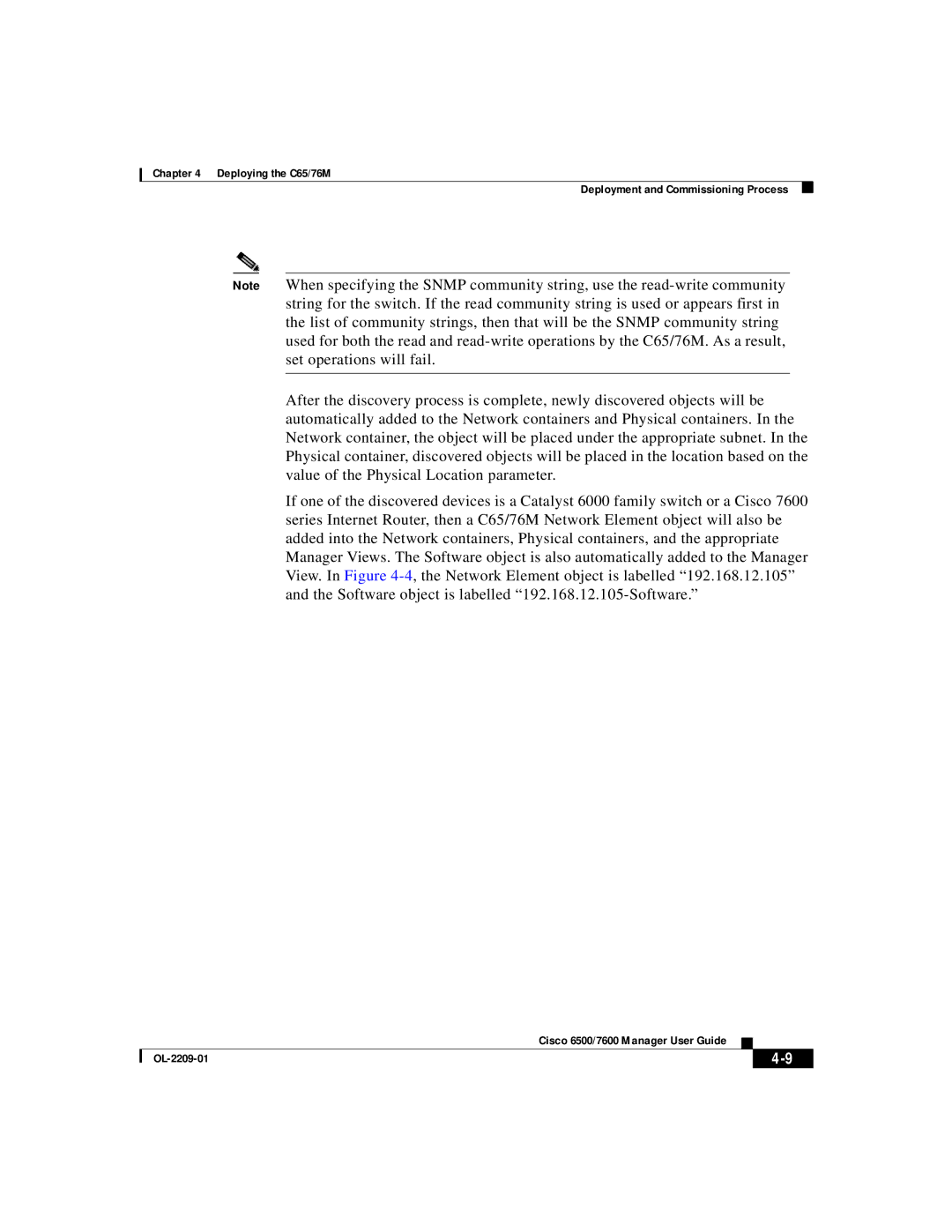C65, 76M specifications
Cisco Systems has long been at the forefront of network solutions, and its Cisco 76M and Cisco C65 series of routers exemplify the company's commitment to innovation, performance, and reliability. These devices are built to meet the evolving needs of businesses requiring robust networking capabilities that can facilitate seamless communication and data management.The Cisco 76M router is engineered to support high-bandwidth applications and ensure minimal latency, making it ideal for enterprises that rely on real-time data processing and cloud services. Its feature set includes advanced routing protocols such as OSPF (Open Shortest Path First) and BGP (Border Gateway Protocol), allowing for efficient data flow and optimized network performance. The router is equipped with enhanced security measures, including integrated firewalls and intrusion prevention systems, which help safeguard sensitive information against cyber threats.
One notable technology in the Cisco 76M is its support for SD-WAN (Software-Defined Wide Area Network), enabling organizations to leverage multiple connectivity options while simplifying network management. This flexibility allows businesses to dynamically route traffic based on application needs and network conditions, ensuring optimal performance and cost efficiency.
On the other hand, the Cisco C65 series distinguishes itself with its scalability and versatility. Designed for both small to medium-sized enterprises as well as larger organizations, the C65 can effectively handle a diverse range of networking tasks. This series includes features such as support for IPv6, advanced Quality of Service (QoS), and dual-stack technology, which empowers users to manage and prioritize network traffic efficiently.
The Cisco C65 also emphasizes energy efficiency without compromising performance. Built with eco-friendly materials and featuring advanced cooling technologies, it minimizes power consumption, thereby reducing operational costs while maintaining high throughput. Its modular design allows for easy upgrades, making it an adaptive choice that can grow alongside a business's needs.
In conclusion, the Cisco 76M and C65 series routers offer advanced features, security measures, and scalable designs that cater to the networking demands of today's enterprises. With capabilities like SD-WAN support, enhanced routing protocols, and a strong focus on energy efficiency, these devices are exemplary tools for organizations looking to optimize their network infrastructure and drive business success in a digital-first world.

